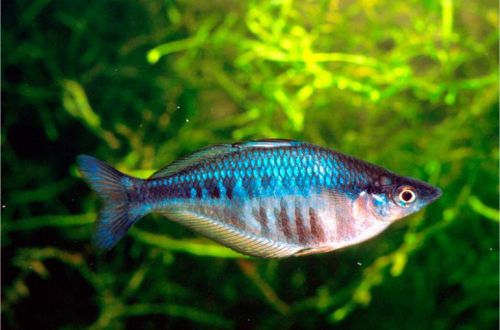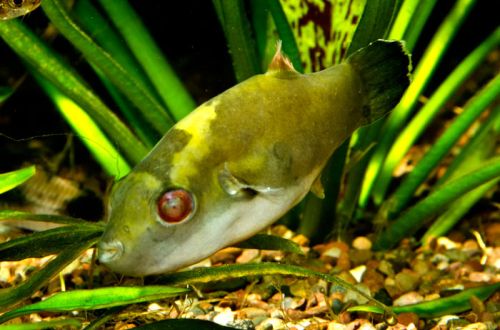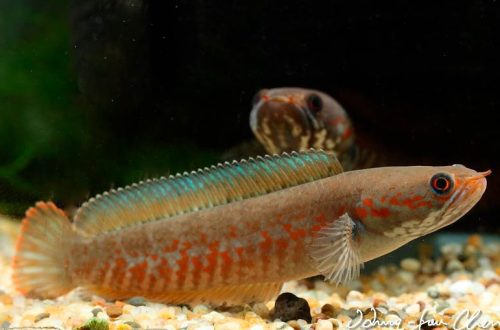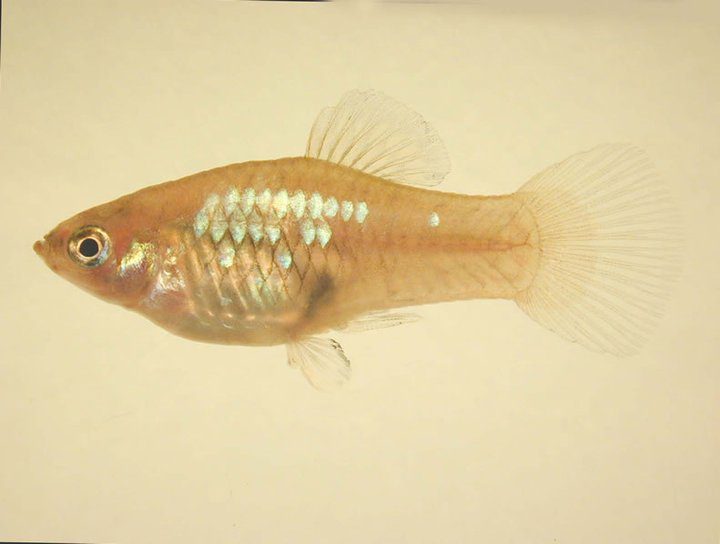
Pecilia vulgaris
Pecilia or Platipecilia spotted, scientific name Xiphophorus maculatus, belongs to the Poeciliidae family. Due to its hardiness and bright colors, it is one of the most popular aquarium fish. However, the vast majority of the Pecilia living in aquariums are breeding varieties bred artificially, including by hybridization with the Swordtails. Wild individuals (pictured below) are markedly different from ornamental breeds, having a modest, if not plain, color.

Fish that are similar in color to their natural counterparts have all but disappeared from the hobby aquarium hobby. The name has become collective and applies equally to the large number of new breeds and color variations that have emerged over decades of active breeding.
Kaundan
Habitat
Wild populations inhabit numerous river systems in Central America from Mexico to Nicaragua. Occurs in shallow waters of backwaters of rivers, lakes, swamps, ditch, flooded pastures. Prefers areas with dense aquatic vegetation.
Mubo nga impormasyon:
- Ang gidaghanon sa aquarium - gikan sa 60 ka litro.
- Temperatura – 20-28°C
- Bili pH - 7.0-8.2
- Katig-a sa tubig - medium hangtod sa taas nga katig-a (10-30 GH)
- Type sa substrate - bisan unsa
- Pagsiga – kasarangan o hayag
- Brackish nga tubig – madawat sa usa ka konsentrasyon sa 5-10 gramos kada litro sa tubig
- Ang paglihok sa tubig - kahayag o kasarangan
- Ang gidak-on sa isda mao ang 5-7 cm.
- Pagkaon - bisan unsang pagkaon
- Temperament – malinawon
- Kontento nga mag-inusara, magtinagurha o sa usa ka grupo
Description
Adult males reach a length of about 5 cm, females are larger, grow up to 7 cm. Males can also be distinguished by the presence of a gonopodia – a modified anal fin intended for fertilization.
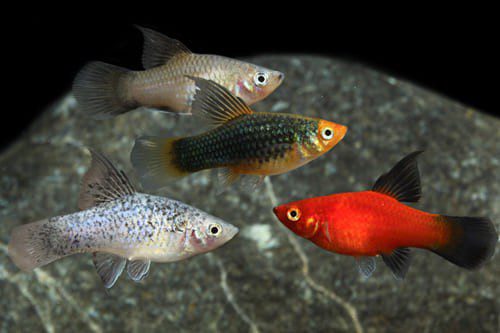
The common Pecilia living in the wild has a dense body and a nondescript gray-silver color. In the picture, sometimes there may be black specks of irregular shape. In turn, breeding varieties and hybrids are distinguished by a wide variety of colors, body patterns and fin shapes.
Food
With pleasure they accept all types of dry (flakes, granules), frozen and live foods, such as bloodworms, daphnia, brine shrimp, etc. Feed 1-2 times a day in an amount eaten in five minutes. Remaining food should be removed.
Pagmentinar ug pag-atiman, kahikayan sa aquarium
The ability of Pecilia to live in a wide range of hydrochemical parameters makes it one of the most unpretentious aquarium fish. Successful keeping is possible even in a small aquarium equipped with a simple airlift filter, provided a small number of inhabitants. In this case, to maintain ecological balance, it is recommended to renew the water by 30–50% once every two weeks.
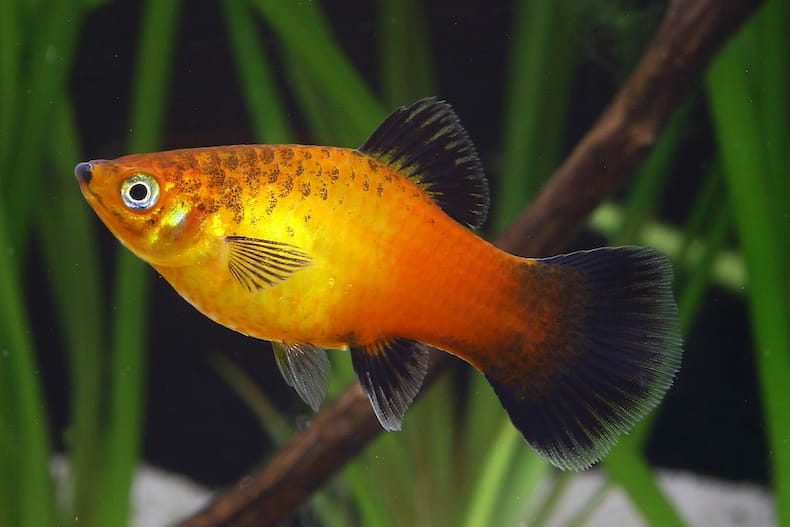
In the design, the presence of shelters in the form of thickets of plants and other shelters is important. The remaining elements of the decor are selected at the discretion of the aquarist. The presence of a bog tree is welcome (driftwood, branches, roots, etc.), in bright light, algae grow well on them, which will be a great addition to the diet.
Acceptable content in brackish water with a salt concentration of 5-10 grams per liter.
Kinaiya ug Pagkaangay
Peaceful mobile fish that need appropriate tankmates. Males are tolerant of each other, however, the composition of the group is recommended, where there will be more females. Compatible with closely related, Swordtails, Guppies and many other species of comparable size and temperament.
Pagpasanay / pagpasanay
Breeding does not require special conditions. In the presence of a sexually mature male and female, fry will appear regularly at intervals of once every two months. One female can bring up to 80 fry. It is important to have time to catch and place in a separate tank before they are eaten by adult fish. In a separate aquarium (a three-liter jar is enough), the water parameters should match the main one.
Mga sakit sa isda
The closer the hybrid or breeding breed of Pecilia is to its wild predecessors, the more hardy it is. In favorable conditions, cases of disease are rare. Read more about symptoms and treatments in the Aquarium Fish Diseases section.



